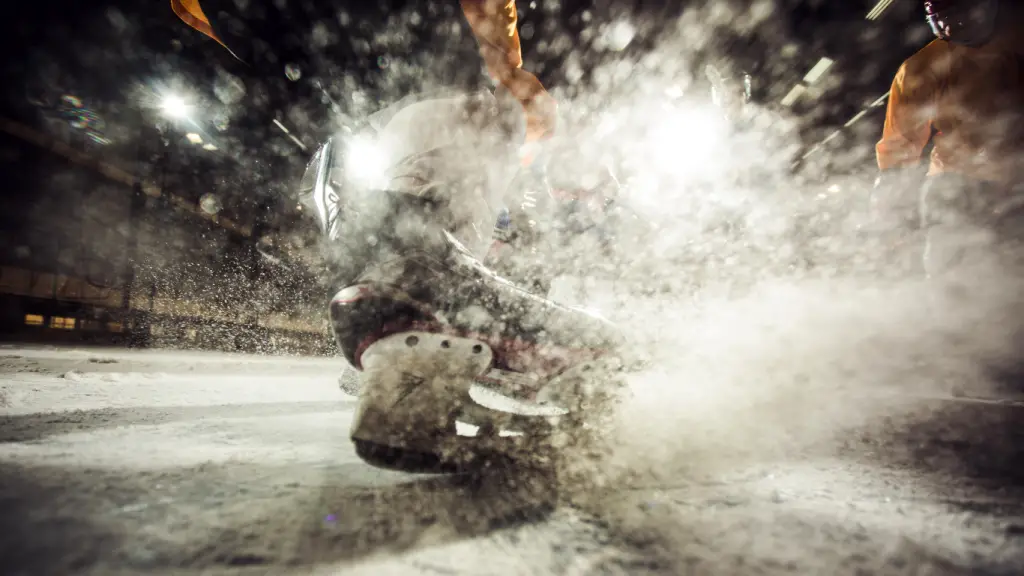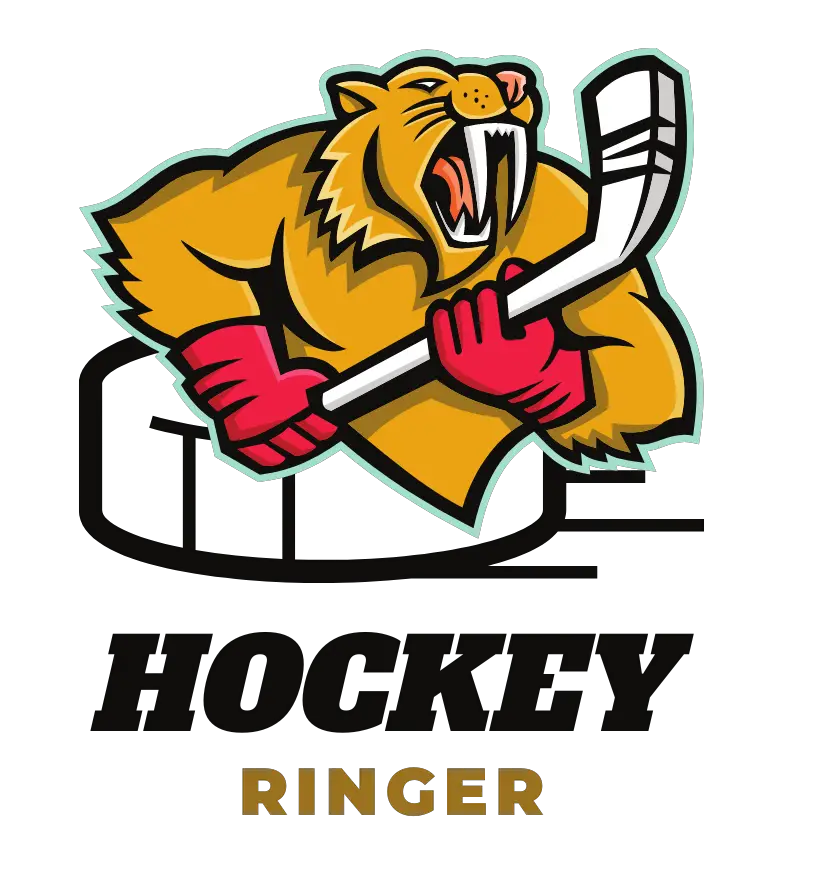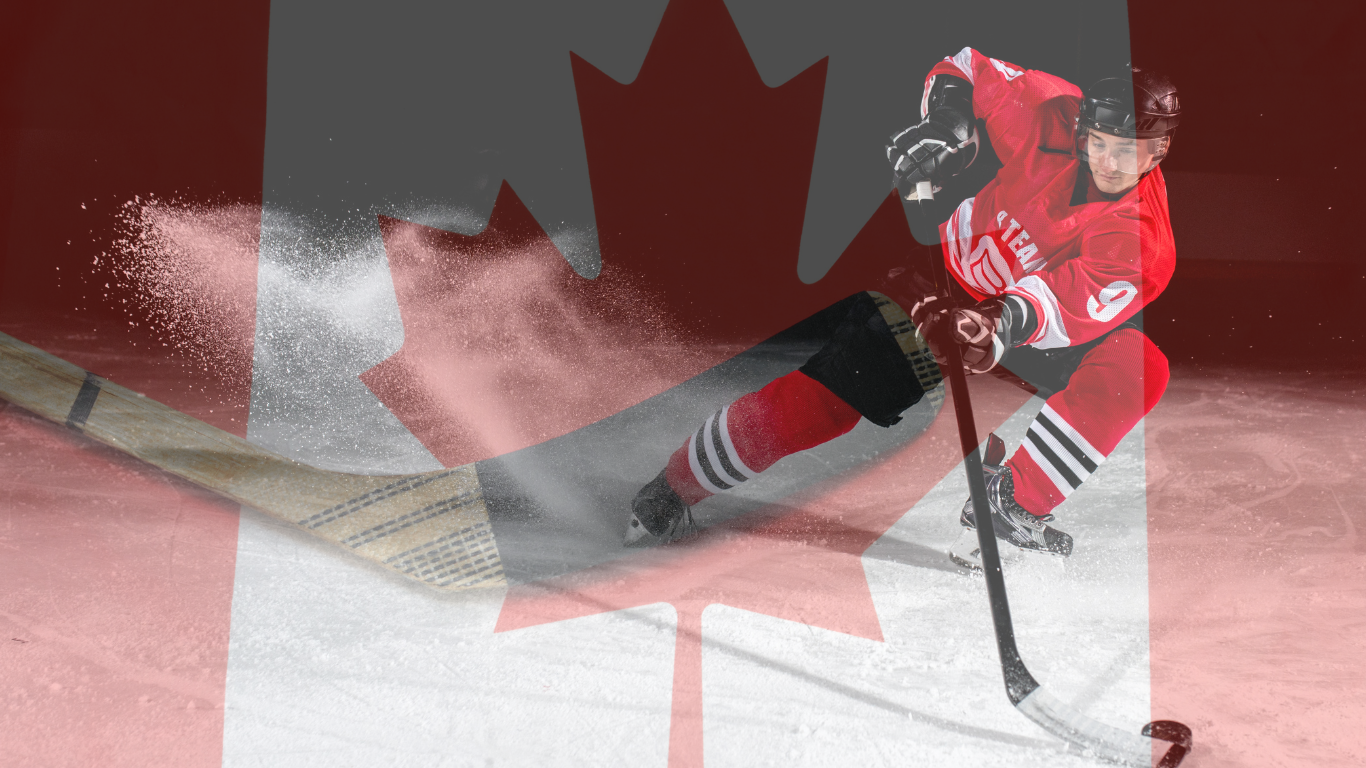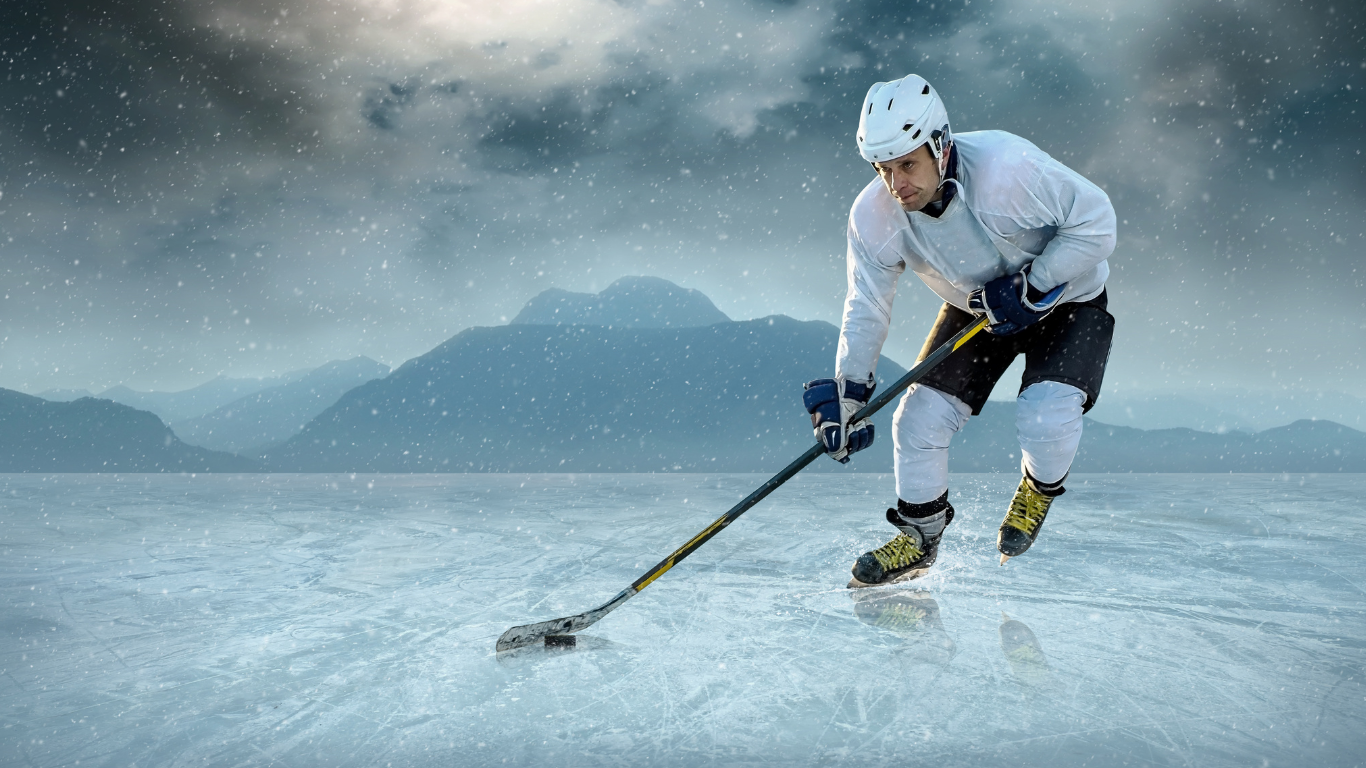Stopping swiftly and safely in ice hockey is crucial for both performance and safety. To master this essential skill, begin by skating forward to build moderate momentum. This speed ensures your skate blades effectively grip the ice.
As you prepare to stop, turn your head and shoulders in the desired stopping direction. Simultaneously, lift your dominant leg slightly, shifting your weight to your other leg. The key is to rotate your hips towards your stopping direction while using the inside edge of your dominant skate to dig into the ice, creating friction.
Maintain your initial skating direction’s momentum to prevent merely turning around. As with many ice hockey techniques, practice makes perfect. Ensure you practice stopping using both legs to achieve flexibility and efficiency in the game
Techniques for Stopping in Ice Hockey

Hockey Stop Technique
The hockey stop is one of the most important stopping techniques to learn in ice hockey. It is a quick and effective way to stop at high speeds. To perform a hockey stop, you need to shift your weight onto your inside edges while keeping your knees bent. Then, you need to turn your skates perpendicular to your direction of travel and dig your outside edge into the ice. This will cause you to come to a stop quickly.
Snowplow Stop
The snowplow stop is a beginner stopping technique that is easy to learn. To perform a snowplow stop, you need to turn your toes inward and push your heels outwards while keeping your knees bent. This will cause your skates to form a “V” shape, which will slow you down. The snowplow stop is a good way to take it slow while learning how to stop in hockey.
T-Stop
The T-stop is a stopping technique that is useful for changing directions quickly. To perform a T-stop, you need to lift one foot and turn it perpendicular to your other foot. Then, you need to dig the outside edge of the blade of your lifted foot into the ice while keeping your other foot stationary. This will cause you to come to a stop and change directions quickly.
Parallel Stop
The parallel stop is a stopping technique that is useful for slowing down gradually. To perform a parallel stop, you need to shift your weight onto the inside edge of your strong leg while keeping your other foot parallel to it. Then, you need to dig the outside edge of your other foot into the ice. This will cause you to slow down gradually.
Learning how to stop in hockey is an essential skill that requires technique and skill. It is important to take it slow and go through the process of stopping in hockey step by step. Remember to sharpen your skates and commit to your stops to ensure that you can stop effectively.
Importance of Skates and Edges
Understanding Inside and Outside Edges
In ice hockey, stopping is an essential skill that every player must master. To stop effectively, a player needs to understand the importance of skates and edges. Skates are the primary tool that a player uses to stop, and the edges of the blades are what allow the player to control their movement.
There are two types of edges on a hockey skate, the inside edge and the outside edge. The inside edge is the part of the blade that is closest to the center of the player’s body, while the outside edge is the part of the blade that is furthest away from the body.
When stopping, a player must use both edges of their skate to control their movement. By using the inside edge of the blade, the player can slow down and change direction, while the outside edge is used to maintain balance and control.
Importance of Sharp Skates
To stop effectively, a player must have sharp skates. A sharp skate allows the player to dig into the ice and control their movement. If the skates are dull, the player will have less control, and stopping will be much more difficult.
It’s essential to regularly sharpen your skates to maintain their sharpness. Most players sharpen their skates every few weeks, depending on how often they play. However, if you notice that your skates are not gripping the ice as well as they used to, it may be time to sharpen them.
Body Position and Balance in Ice Hockey Stop
Weight Distribution
Weight distribution is key to performing a successful stop in ice hockey. You want to make sure that your weight is evenly distributed between both legs. This will help you maintain balance and control as you come to a stop.
Knee and Hip Position
Your knee and hip position are also important factors in executing a stop. As you come to a stop, you want to rotate your hip and lean back slightly. This will help you maintain balance and control as you slow down. You also want to make sure that both legs are bent and that your weight is evenly distributed between them.
To execute a stop, you should:
- Shift your weight to your inside foot
- Pivot on your inside foot
- Rotate your hip and lean back slightly
- Lift a bit of weight off your outside foot
- Use your other leg for balance
- Lift one leg to stop completely
Remember, practicing your stops will help you improve your technique and become a better player on the ice.
Drills for Mastering Ice Hockey Stop
Basic Stopping Drills
Learning how to stop in hockey is a crucial part of the skating process. Here are some basic drills that can help you master the stop.
- T-Stop: This is the most basic stop in hockey. Start by skating forward, then shift your weight to one foot and turn the other foot perpendicular to it, forming a “T” shape. Drag the perpendicular foot behind you to stop.
- Snowplow Stop: This is another basic stop that is commonly used in hockey. Start by skating forward, then turn your toes inward and push your heels outwards, creating a wedge shape with your skates. This will slow you down and eventually stop you.
Advanced Stopping Drills
Once you have mastered the basic stops, you can move on to more advanced drills that will help you stop more quickly and efficiently.
Hockey Stop: This is a more advanced stop that is used in games to quickly change direction. Start by skating forward, then shift your weight to one foot and turn the other foot perpendicular to it. At the same time, dig the inside edge of the perpendicular foot into the ice to stop.
Cross-Over Stop: This is an advanced stop that requires good balance and coordination. Start by skating forward, then cross one foot over the other and dig the inside edge of the back foot into the ice to stop.
Safety Measures in Ice Hockey Stop
Importance of Protective Gear
Protective gear is essential in ice hockey, especially when it comes to stopping. Wearing the right gear can help prevent injuries and keep players safe. Helmets are a must-have for all players, and they should fit snugly and have a cage or visor to protect the face. Pads are also important, including shoulder pads, elbow pads, shin guards, and gloves. Skates should fit properly and have a stiff boot to provide support.
When it comes to stopping, players should wear knee pads to protect their knees from impact. Additionally, mouthguards can help prevent dental injuries, and neck guards can protect players from cuts and lacerations.
Safety Tips for Beginners
For beginners, stopping can be a challenging skill to master. However, there are some safety tips that can help make the process easier and safer. First, it’s important to start slow and gradually build up speed as you become more comfortable with the technique.
When attempting to stop, players should keep their weight on their front foot and shift their weight to their back foot while turning their skates sideways. This will cause the skates to dig into the ice and create friction, slowing the player down.
It’s also important to keep your knees bent and your head up while stopping to maintain balance and avoid falls. Players should practice stopping in a controlled environment, such as an empty rink or with the help of a coach or experienced player.
Frequently Asked Questions
How can I improve my hockey stopping technique?
Improving your hockey stopping technique requires practice and patience. Start by focusing on your body positioning and weight distribution. Keep your knees bent and your weight centered over your skates. Practice stopping with both feet and with one foot at a time. Gradually increase your speed as you become more comfortable with the technique.
What are some common mistakes to avoid when stopping in ice hockey?
One of the most common mistakes is leaning too far back or forward, which can cause you to lose your balance. Another mistake is not distributing your weight evenly on both skates, which can lead to an uneven stop. Also, avoid using only one foot to stop, as this can put too much strain on your ankle and knee.
What is the proper body positioning for a hockey stop?
The proper body positioning for a hockey stop involves keeping your knees bent, your weight centered over your skates, and your upper body leaning slightly forward. Your shoulders should be level, and your arms should be out to the sides for balance. Keep your head up and your eyes focused on your target.
How do you transition from forward skating to a hockey stop?
To transition from forward skating to a hockey stop, start by shifting your weight to your back foot. Then, turn your front foot perpendicular to the direction of your skate and dig into the ice with the inside edge of your skate. As you come to a stop, transfer your weight to your front foot and bring your back foot alongside your front foot.
What are some drills to practice hockey stopping?
One drill is to practice stopping with both feet at the same time, gradually increasing your speed as you become more comfortable. Another drill is to practice stopping with one foot at a time, alternating between your left and right foot. You can also practice stopping while carrying a puck or stick to simulate game situations.
How do you stop quickly in ice hockey?
To stop quickly in ice hockey, you need to shift your weight to your back foot and dig into the ice with the inside edge of your skate. As you come to a stop, transfer your weight to your front foot and bring your back foot alongside your front foot. Practice this technique with both feet and gradually increase your speed as you become more comfortable.




Leave a Reply